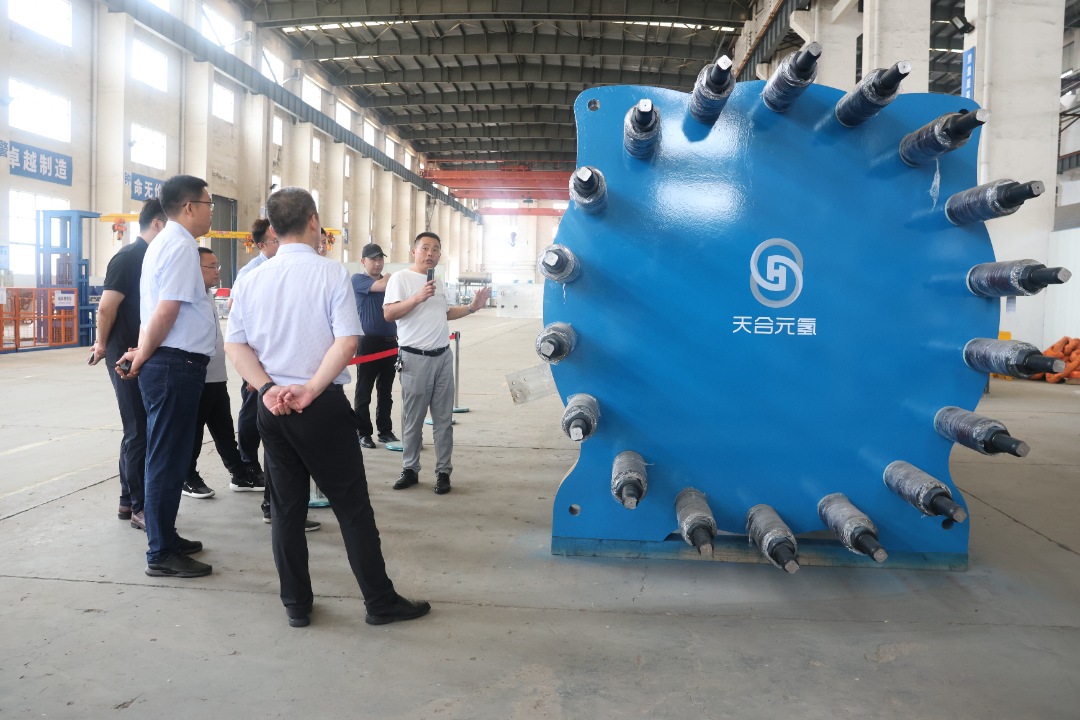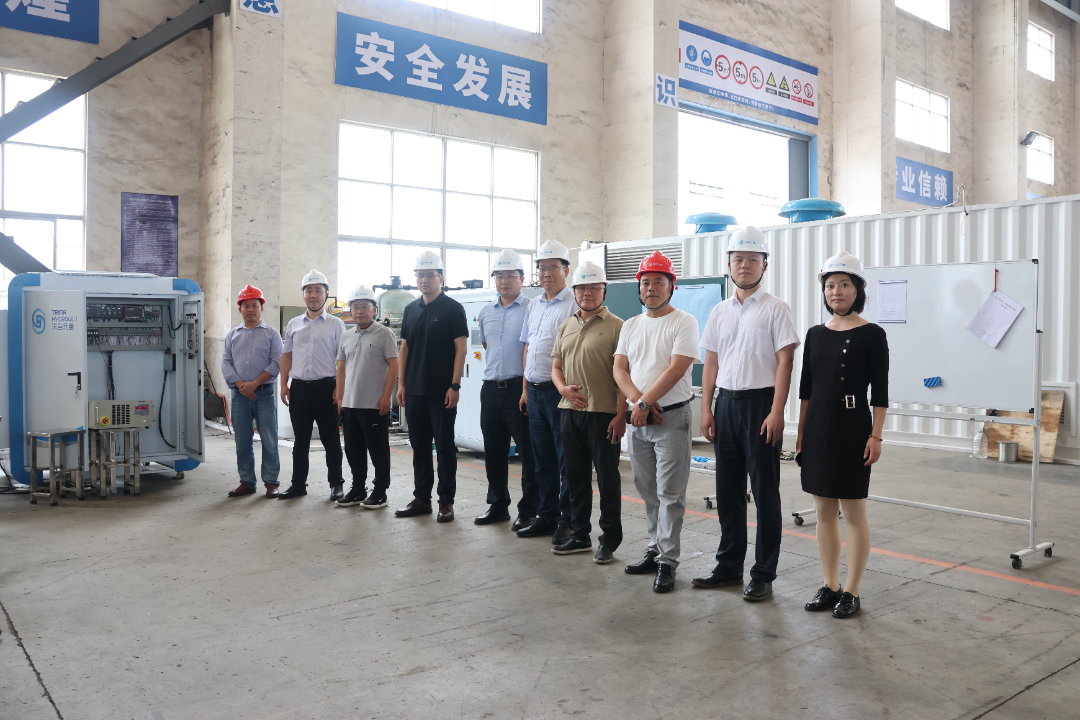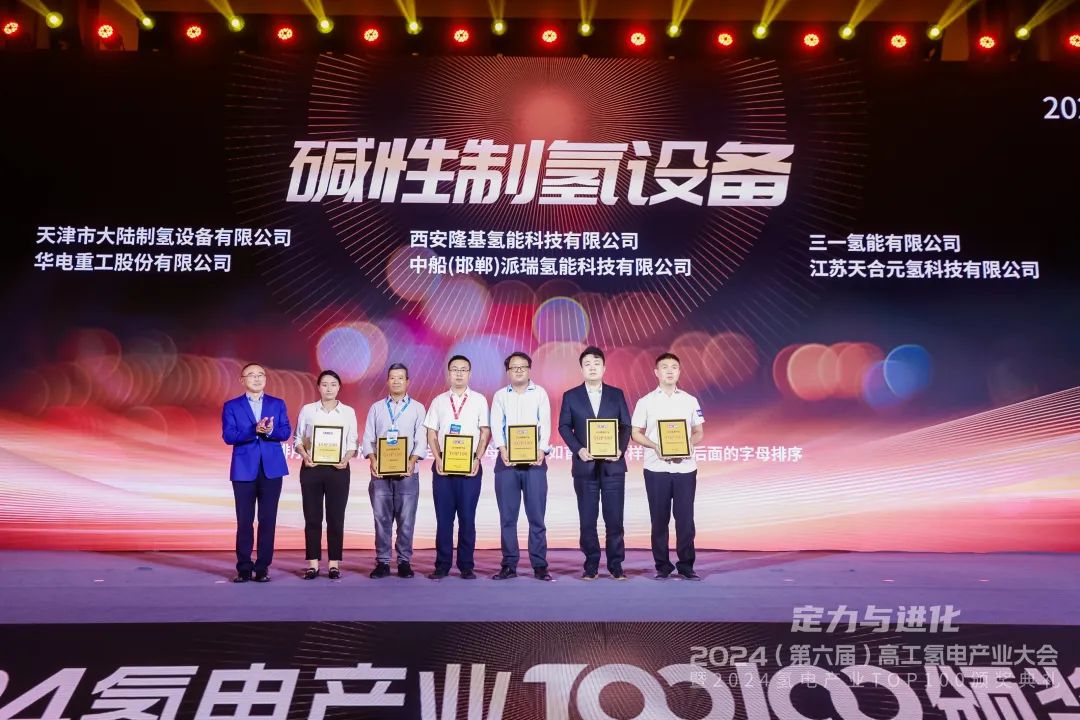On June 22nd, the mild saline alkali water in-situ electrolysis prototype jointly developed by State Power Investment Group Xinjiang Energy and Chemical Co., Ltd. (referred to as "Xinjiang Company"), State Nuclear Power Planning and Design Institute Co., Ltd. (referred to as "State Nuclear Power Institute"), and Jiangsu Tianhe Yuan Hydrogen Technology Co., Ltd. (referred to as "Tianhe Yuan Hydrogen") successfully passed on-site operation tests and expert review. During the experiment, the hydrogen production of the prototype reached the rated value, with a unit hydrogen production DC power consumption of 3.935kWh/Nm ³, a current density of over 5000A/㎡, and continuous and stable operation at 30% -110% load. Compared to traditional alkaline electrolysis water hydrogen production systems, the system link has been shortened, achieving a new breakthrough in in-situ hydrogen production technology for saline alkali water.

The in-situ electrolysis prototype of mild saline alkali water is one of the important achievements of the research and development funding support project "Typical Scenario Creation and System Simulation Research of Off grid Renewable Energy Hydrogen Production in Western Region" by State Power Investment Group. This project is jointly undertaken by Xinjiang Company, State Nuclear Power Institute and other subsidiary enterprises of State Power Investment, focusing on the interconnection structure and low-cost configuration methods of renewable energy hydrogen production systems in off grid/grid mode. Based on the current equipment level research system reduction space and equipment optimization methods, a system and business model construction plan for potential low-cost application scenarios such as off grid hydrogen production and electricity market coupled hydrogen production has been formed. Practical tools for electrolysis equipment and project automatic configuration have been developed to adapt to western scenarios, and the combination of software and hardware comprehensively serves the future large-scale hydrogen production in western regions. The implementation of renewable energy hydrogen production projects.
State Nuclear Power Institute is a wholly-owned second level subsidiary of State Power Investment Corporation of China, and a green power conversion technology assembly unit of State Power Investment Corporation of China. It has Class A comprehensive engineering design qualification, Class A engineering consulting qualification, and Class A comprehensive engineering survey qualification. We have completed multiple domestic first projects, including the integrated demonstration project of "renewable energy+PEM hydrogen production+hydrogenation" in the China South Korea demonstration zone of Jidian Corporation, the first demonstration project of electrolytic hydrogen production mixed with natural gas pipeline in Chaoyang, Liaoning, and the comprehensive utilization project of renewable energy hydrogen production and chemical industry in Ningdong, China. With rich engineering experience, we have firmly ranked in the first tier of domestic hydrogen system integration technology.

The expert group of this review meeting was composed of relevant experts from the Hydrogen Energy Branch of the China Association for the Promotion of Industrial Development, Sinopec Xinxing Petroleum Co., Ltd., and others. They jointly supervised the continuous operation and testing process of the prototype, and deeply discussed key technical issues and industrial development prospects of in-situ hydrogen production from saline alkali water. The reviewing experts unanimously believe that the in-situ electrolysis prototype technology for mild saline alkali water has strong innovation, advanced indicators, independent intellectual property rights, and has reached the international leading level.

The breakthrough of in-situ electrolysis technology for saline alkali water has important driving significance and broad application prospects. In response to the current situation of abundant scenic resources but scarce water resources in the northwest region of China, this technology can fully utilize direct hydrogen production from brackish water, salt lake water, etc., reduce hydrogen production costs, and is of great significance for promoting industrial development and ensuring national energy security.




